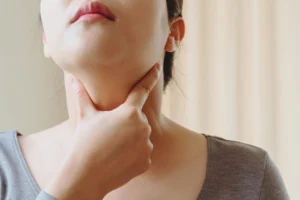Menstruation Complications That No One Talks About
Normal vaginal bleeding that occurs every month in women is known as Menstruation. Menstruation is also called periods. Besides vaginal bleeding, women experience abdominal cramping, mood swings, lower back pain, headaches, extreme fatigue, and bloating or sore breasts. Here’s a list of several menstrual problems that may need assistance.
Heavy Periods (Menorrhagia)
Heavy menstrual bleeding is referred to as Menorrhagia wherein bleeding lasts longer than 7 days. The condition affects the sleeping cycle, causes abdominal pain, and can potentially lead to anemia.
Causes Of Menorrhagia
Vaginal infections, non-cancerous uterus tumors, puberty, changes in lifestyle or diet, inflammation of the cervical cavity, and hypothyroidism are some of the causes of heavy menstrual bleeding.
- The body regulates the balance of estrogen and progesterone during a normal menstrual cycle regulating the uterine lining. But if there is a hormonal imbalance, the body may produce excessive endometrial lining leading to heavy subsequent bleedings.
- Non-cancerous or benign tumors are present in the uterus during the childbearing years. They can cause heavy menstrual bleeding. Additionally, uterine fibroids are also considered a cause of prolonged vaginal bleeding.
- Heavy menstrual bleeding occurs as a side effect of non-hormonal intrauterine devices.
- Menorrhagia may occur due to ovarian dysfunction. Annovaluation is the condition wherein ovaries fail to release an egg. The condition leads to hormonal imbalance causing heavier vaginal bleeding than usual.
Symptoms Of Menorrhagia
- Longer menstrual cycles (longer than a week)
- Soaking of one or more than one sanitary pad/ tampons in an hour
- Requirement of using double sanitary pads
- Presence of quarter-sized blood clots
- Extreme tiredness, shortness of breath, fatigue, and discomfort
- Not being able to do daily activities due to heavy menstrual bleeding
- Long-lasting pain in the lower abdomen
Amenorrhea (Absence Of Menstruation)
The absence of periods is known as Amenorrhea. Primary Amenorrhea occurs when periods are absent in females by the age of 15. Secondary Amenorrhea occurs when menstruation is absent more than three types in a row. Rigorous athletic activities, eating disorders such as Anorexia nervosa, and a family history of Amenorrhoea are some of the risk factors of Amenorrhoea.
Causes Of Amenorrhea
- Natural Amenorrhea occurs due to pregnancy, menopause, and breastfeeding.
- It has been found that those females who take contraceptives or birth control pills may experience Amenorrhea.
- Medications such as antidepressants, tablets for controlling blood pressure, chemotherapeutic chemicals, antipsychotics, and allergy tablets cause menstruation to stop.
- Women engaged in rigorous exercises such as ballet, training, etc. often experience Amenorrhea.
- Hormonal imbalances occurring due to polycystic ovary syndrome (PCOS), premature menopause, thyroid malfunction lead to Amenorrhea.
Symptoms Of Amenorrhea
- Lack of menstruation
- Milky discharge from nipples
- Severe headaches
- Additional growth of facial hairs
- Vision problems
- Acne
- No breast development in case of primary Amenorrhea
Premenstrual syndrome (PMS)
Premenstrual syndrome (PMS) is the condition wherein all the symptoms arise before menstruation. This brings various uncomfortable symptoms that gradually go away when the period begins. PMS arises due to hormonal fluctuations, changes in the levels of serotonin (neurotransmitters), and depression.
Symptoms Of Premenstrual syndrome
- Females may experience various emotional and behavioral symptoms including mood swings, social withdrawal, anxiety, changes in appetite, lack of concentration, and Irritability.
- Severe pain in the abdominal region, joints, and pelvic muscles.
- Weight gain due to fluid retention
- Alcohol intolerance
- Tenderness in breast
Dysmenorrhea (Painful Periods)
A condition in which females experience severe and frequent menstrual cramps is termed dysmenorrhea. Primary dysmenorrhea occurs when menstruation starts casting severe cramping. Secondary dysmenorrhea occurs due to physical causes. Smoking, heavy vaginal bleeding, irregular menstrual cycles, age under 20, and family history are some of the causes of painful periods.
Causes Of Dysmenorrhea
- Endometriosis is a condition in which similar tissue grows along the uterine lining and other regions such as ovaries, fallopian tubes, uterus, and bladder. Changes in the hormones cause this lining to break down in the form of vaginal bleeding that causes pain and discomfort.
- Growth of fibroids outside, inside, and in the uterine walls causes painful periods.
- Medical conditions such as Crohn’s disease and urinary disorders often lead to painful menstruation.
Symptoms Of Dysmenorrhea
- Presence of menstrual cramping in the lower abdomen
- Pain in lower back, stomach, and joints
- Nausea, fatigue, tiredness, diarrhea, and vomiting
Conclusion
Regular vaginal bleeding that occurs every month in women is termed Menstruation. Being fit physically, mentally, and socially is extremely important and determines menstrual health. Females need to keep the genital areas clean, hygienic, and comfortable to avoid any discrepancy and discomfort. It’s advisable to reach out to professionals and health care providers in case of any menstrual complexity or disorder. To treat menstrual problems and pelvic inflammatory diseases, antibiotics and other medications are advised by the doctor. Avoiding stress, excessive salt and sugar in diet, caffeine, smoking, and alcohol can help to improve menstrual health.






